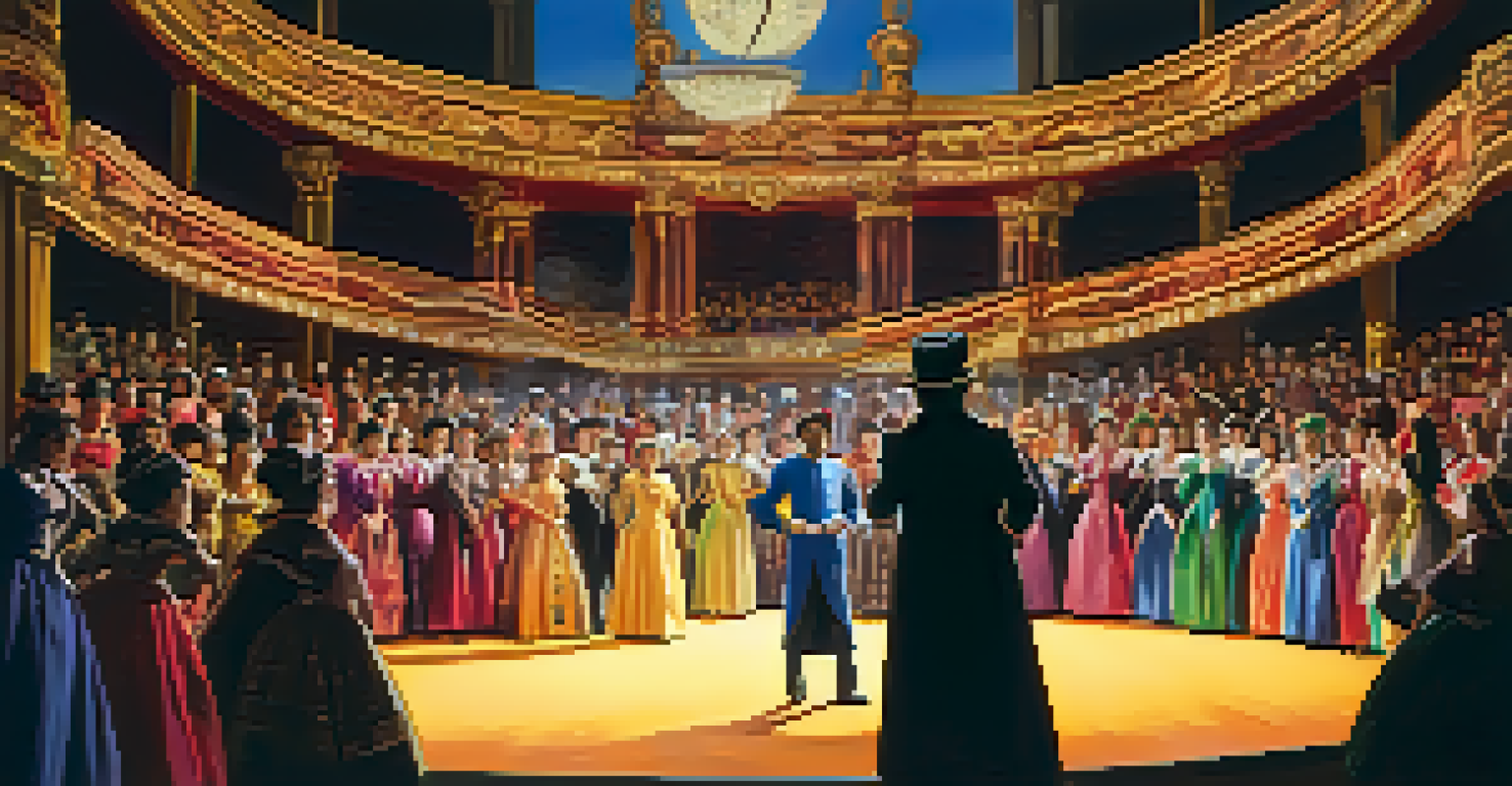Writing for Performance: Crafting Scripts for the Stage

Understanding the Basics of Scriptwriting
Scriptwriting is a unique form of storytelling that focuses on dialogue and stage directions. Unlike novels, scripts are written to be performed, which means each line must convey emotion and action clearly. This requires writers to think visually and audibly, imagining how actors will bring their words to life on stage.
A script is like a blueprint for a house; it provides the structure for the story to be built upon.
At its core, a script serves as a blueprint for the entire production, guiding directors, actors, and crew through the story. It’s essential to create a strong structure, often following a three-act format that helps maintain audience engagement. This structure acts like the skeleton of your narrative, ensuring that it has a solid foundation.
Understanding the audience is also crucial in scriptwriting. A well-crafted script resonates with viewers, drawing them into the world you've created. The connection between characters and the audience can make or break a performance, so focus on creating relatable, multi-dimensional characters.
Creating Compelling Characters for the Stage
Characters are the heart of any script, and developing them requires careful thought and creativity. Each character should have distinct traits, desires, and flaws that make them unique and believable. For instance, think of a protagonist who struggles with insecurity; their journey towards self-acceptance can resonate deeply with audiences.

It's also important to consider character arcs—the transformation a character undergoes throughout the narrative. Audiences love to see growth, so ensuring that your characters evolve in response to the events of the play adds depth to the story. This journey can create emotional stakes that keep viewers invested.
Craft Strong Characters
Developing relatable, multi-dimensional characters is essential for engaging the audience and enhancing emotional stakes.
Dialogue plays a significant role in character development, revealing personalities and motivations through what they say and how they say it. Crafting authentic dialogue that sounds natural and reflects your character’s background can elevate your script and make your characters memorable.
The Importance of Structure in a Script
A strong structure is vital in scriptwriting, as it shapes the pacing and flow of the narrative. The three-act structure is a popular method used to create a compelling arc, consisting of setup, confrontation, and resolution. Each act serves a specific purpose, ensuring that the story unfolds in a way that captivates the audience.
Good dialogue is not just about what is said, but how it is said.
In the setup, you introduce characters, establish the setting, and present the main conflict. This is your chance to hook the audience's attention right from the start. The confrontation act raises the stakes, complicating the characters’ journeys and building tension before the climax.
Finally, the resolution ties up loose ends and provides closure to the story. This structure not only makes your script easier to follow but also enhances emotional impact, allowing audiences to feel a sense of fulfillment as the curtain falls.
Writing Dialogue That Sparks Interest
Dialogue is the lifeblood of a script, serving as the primary means of communication between characters. Good dialogue should sound natural and reflect each character’s voice, personality, and background. Think about how different characters might speak: a witty, sarcastic character will have a different tone compared to a serious, introspective one.
Additionally, subtext is key in dialogue; what’s left unsaid can often be more powerful than what is spoken. Characters may hide their true feelings or intentions, creating tension and intrigue. For example, a character who says, 'I’m fine' with a tense voice can reveal much about their inner turmoil.
Utilize a Clear Structure
Employing a three-act structure helps maintain pacing and keeps the audience captivated throughout the narrative.
Remember to keep dialogue concise and purposeful. Every line should advance the plot or reveal character traits. Avoid lengthy monologues unless they serve a specific function, as too much exposition can lose the audience's interest.
Incorporating Stage Directions Effectively
Stage directions are crucial in guiding actors and directors on how to interpret the script. These directions provide essential details about character movements, emotions, and interactions with the set. For example, noting a character’s hesitation before speaking can add layers to their performance, making it more authentic.
However, balance is key; too many stage directions can be overwhelming and disrupt the flow of the script. Aim for clarity and brevity, ensuring that directions enhance rather than overshadow the dialogue. Visualizing the scene can help you determine what’s necessary for the performance.
Additionally, consider how stage directions can impact the pacing of the play. Well-placed pauses or movements can build tension and create dramatic moments, while allowing the audience to absorb key information. This thoughtful integration can elevate the overall impact of your script.
The Role of Theme in Scriptwriting
Themes are the underlying messages or ideas that give depth to your script. They can range from love and betrayal to societal issues and personal growth. By incorporating a strong theme, you provide your audience with something to ponder long after the curtains close.
When developing your script, consider what message you want to convey. This theme can be woven throughout the dialogue, character arcs, and plot developments. For instance, a play exploring the theme of redemption might feature a flawed character who makes significant sacrifices to atone for their past.
Revise for Clarity and Impact
Thorough revision allows for refining ideas, tightening dialogue, and ensuring themes resonate effectively with the audience.
Ultimately, a well-executed theme can resonate deeply with audiences, making your script not just entertaining but also thought-provoking. It encourages viewers to reflect on their own experiences and perspectives, creating a lasting connection to the performance.
Revising and Polishing Your Script
Revision is an essential part of the scriptwriting process, allowing you to refine your ideas and improve clarity. After completing your first draft, take a step back and read through your work with fresh eyes. This distance can help you identify areas that need improvement or adjustments.
Consider seeking feedback from peers or joining a writers' group, as they can provide valuable perspectives on your script. Constructive criticism can highlight strengths you may not have noticed and point out weaknesses that might need more attention. Remember, it’s about collaboration and growth.

Lastly, don’t rush the polishing stage. Great scripts often go through multiple revisions before reaching their final form. Focus on tightening dialogue, enhancing character development, and ensuring that your themes resonate clearly. Your dedication to refining your script will shine through in the final performance.